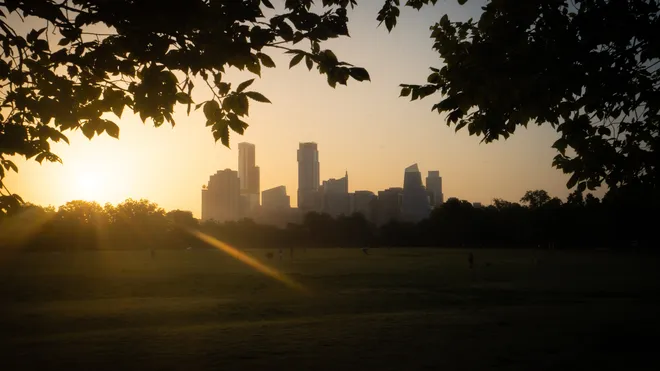Now that a sizable mass of dry, dusty air from the Sahara desert has crossed the Atlantic Ocean, Texans are once more suffering from the effects of Saharan dust. The Saharan air layer is a seasonal phenomenon that affects areas far beyond its origins in North Africa in late spring, summer, and early fall.
The Saharan Air Layer: What Is It?
Due to extreme heat during the summer, the Saharan air layer, which forms over the Sahara desert, is distinguished by its dry and dusty composition. This air layer typically extends several miles into the atmosphere and is carried thousands of miles across the Atlantic Ocean by prevailing winds.
Effects on Texas Weather
1. Hazy Skies: One of Saharan dust’s most obvious effects is the haziness it imparts to the atmosphere. This dust has the ability to cover the sky like a veil, making it harder to see and making the air appear milky.
2. Vibrant Sunrises and Sunsets: Saharan dust is recognized for amplifying the hues of dawns and sunsets, even in spite of its possible risks. Vibrant shades of red, orange, and pink are produced by sunlight being scattered by airborne particles.
3. Decreased Air Quality: Saharan dust can lead to decreased air quality, which is particularly harmful to susceptible groups like children, the elderly, and people with respiratory or cardiovascular diseases. It may make allergy symptoms and respiratory problems worse.
Present Effects in Texas
Saharan dust has reportedly been seen along the Texas coast as of late, with a concentration in places like Corpus Christi and Brownsville. The presence of the dust layer affecting visibility and air quality is indicated by the National Weather Service’s report of a “widespread haze” in these areas.
Though less intense than in coastal areas, inland cities like San Antonio and Austin are also predicted to see some haze in the coming days.
Project and Perspective
Weather officials are keeping a careful eye on how the Saharan dust is moving. Although the majority of the dust is expected to move west of the Dallas-Fort Worth region, haze could still occasionally affect these areas depending on wind patterns and atmospheric conditions.
Residents who are sensitive to changes in the atmosphere are advised to take precautions and stay updated about air quality updates by meteorologists. Despite its aesthetic effects on sunrises and sunsets, Saharan dust underscores the interconnectedness of global weather patterns and their impact on local environments.
The return of Saharan dust to Texas serves as a reminder of the complex interrelationships between distant climates and regional weather patterns. It may improve sunsets’ aesthetic appeal, but it also has negative effects on air quality and respiratory health. Sustained surveillance and public education are imperative in order to reduce any possible health hazards linked to this occurrence.
Understanding the effects of Saharan dust helps Texans make informed decisions and be ready for changing atmospheric conditions as they navigate its presence in their skies.
